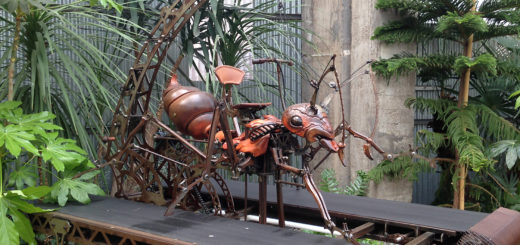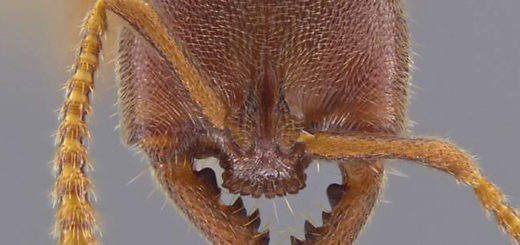The evolutionary puzzle of supercolonies
In the recent review “Supercolonies of ants (Hymenoptera: Formicidae): ecological patterns, behavioural processes and their implication for social evolution” by Heikki Helanterä published in Myrmecological News, Heikki revises the recent literature on ant supercolonies. Here, Patrizia d’Ettorre highlights the main points.
A Review by Patrizia d’Ettorre

Humans are not alone in having achieved global dispersal and colonization of the planet. Ant societies have also reached extraordinary ecological success and currently dominate most terrestrial ecosystems by absolute numbers and diversity (Wilson, 1990). Among the various social and spatial organizations characterizing different ant species, supercoloniality is one of the most spectacular. Invasive ants are typically supercolonial, the paradigmatic example being the Argentine ant Linepithema humile with a supercolony spanning several continents. Along the Mediterranean and Atlantic coasts in Southern Europe, the distribution of the population covers more than 6000 kilometres and acts as a single unit without aggression between workers from nests at the opposite ends of the range (Giraud et al., 2002).
Not all supercolonial special are invasive, however. What exactly are these supercolonies and how do they arise and persist? The review by Heikki Helanterä (Helanterä, 2022) provides us with answers at multiple levels by illustrating the main behavioural, ecological, and genetic processes characterizing supercolonial species and highlighting future directions for the theoretical understanding of the supercolonial lifestyle.
All supercolonies are characterized by polydomy and polygyny, i.e., the presence of multiple nests and multiple egg-laying queens, as well as reproduction by budding. But diversity is important to understand supercolonies. For instance, the size of the supercolony can be very variable. Some species, such as Formica exsecta, are socially polymorphic, with some populations being supercolonial, while others are not. In several species, monogynous and polygynous societies may coexist in the same habitat, making it difficult to classify a species as supercolonial. These aspects are illustrated and thoroughly discussed in the first part of the review.
We are then confronted with the evolutionary puzzle of the persistence of supercolonies. In social insects, reproductive division of labour means that some individuals (queens) reproduce, while others (workers) do not reproduce but work for the colony. This can evolve and be maintained if these workers help close kin, thus increasing their inclusive fitness – as clarified by kin selection theory (Hamilton, 1964; Queller and Strassmann, 1998). Since supercolonies are characterized by very low relatedness among colony-mates, one should expect the collapse of cooperation and the selection of nepotism and selfish genotypes. Yet, we observe a striking ecological success of supercolonies in several ant species.
The persistence of cooperation can be explained when analysing cooperation and conflict at different spatial and temporal scales. Spatially, if a supercolony competes with other supercolonies, low relatedness is less of an issue because within the supercolony it will be higher than between supercolonies. Similarly, there might be genetic structure within a given supercolony, for example, several extended families, in which individuals cooperate with close kin living in close-by nests. Temporally, we should consider that a supercolony originates from a family group in which helping relatives is advantageous. Moreover, in mature colonies, there might be seasonal variations producing different patterns of relatedness. At the beginning of their adult life, workers would help queens and brood that are closely related, even if, due to movements between nests, relatedness will decrease later on. This means that estimating relatedness only from a sample of adult workers may not be entirely informative. Supercolonial lifestyle is thus compatible with kin selection theory (Helanterä, 2009).
The review further examines other conflicts within nests: the possibility of worker reproduction (in those species where workers have retained the ability to lay male eggs), and the interesting case of nepotism concerning brood, where potentially informative chemical cues on eggs reveal kin and allow selective egg cannibalism by larvae (Schultner et al, 2013).
The discussion proceeds by taking into account patterns of aggression and functional integration, aggression bioassays, dispersal strategies, queen recruitment, and male-biased gene flow. There are still many open questions and investigating these processes and their interactions is essential to understand the dynamics of supercolonies.
The final part of the review is dedicated to the genetics of supercolonies in the genomic era. At the supercolony level, genome-wide data will help to understand the genetic structure and homogeneity. At the population level, supercolonies can be good model systems to understand local adaptation and intraspecific divergence under demographic effects. Supercolonies are also very suitable to study the genetic basis of nestmate recognition and communication, the genomics of social traits in general, and heritability and genetic architecture of individual and colony traits (Helanterä et al., 2009; Warner et al., 2017).
The various aspects highlighted above, together with others that I did not directly mention, are then integrated into a comprehensive theoretical framework, opening novel and promising research perspectives. In sum, this review provides an excellent synthesis and thought-provoking ideas.
Can supercolonial ants teach us something about our own societies? Ant societies and human societies represent major transitions in the evolution of complexity in life. Both are characterized by high within-group cooperation and low within-group conflict. Are there other similarities? Ant supercolonies form networks of nests that cooperate to monopolize food resources and nest sites. When introduced into a new environment, supercolonial ants quickly become superior by numbers compared to native species: a network of cooperative units is more successful in exploiting the environment than single units that compete among each other. Similarly, inter-group cooperation was important for the ecological and evolutionary success of Homo sapiens (d’Ettorre 2017). In humans, high levels of cooperation resulted in social networks and networked dispersal, which was much more successful than the dispersal of a single, unconnected group. Networked dispersal allowed the transmission and spreading of technological innovations and know-how of the different groups constituting the network, thus contributing to the global success of human societies.
Now, are we acting like a giant invasive supercolony?
References
d’Ettorre P. (2017). Invasive eusocieties: commonalities between ants and humans. In: Boivin N., Crassard R., Petraglia M. (eds), Human Dispersal and Species Movement. From Prehistory to the Present. Cambridge University Press, Cambridge, UK, pp 411-429.
Giraud, T., Pedersen, J.S. and Keller, L. (2002). Evolution of supercolonies: the Argentine ants of southern Europe. Proceedings of the National Academy of Sciences USA 99: 6075-6079.
Hamilton, W.D. (1964) The genetical evolution of social behaviour. I. Journal of Theoretical Biology 7: 1-896 16.
Helanterä, H. (2009). Do unicolonial wood ants favor kin? Journal of Biology 8: 56.
Helanterä, H., Strassmann, J.E., Carrillo, J., Queller, D.C. (2009). Unicolonial ants: where do they come from, what are they and where are they going? Trends Ecol Evol. 24:341–349.
Helanterä, H., (2022). Supercolonies of ants (Hymenoptera: Formicidae): ecological patterns, behavioural processes and their implication for social evolution. Myrmecological News, 32: 1-22
Queller, D.C. & Strassmann, J.E. (1998). Kin selection and social insects. BioScience 48: 165-175.
Schultner, E., d’Ettorre, P. & Helanterä, H. (2013). Social conflict in ant larvae: egg cannibalism occurs mainly 1107 in males and larvae prefer alien eggs. – Behavioural Ecology 24: 1306-1311.
Warner, M.R., Mikheyev, A.S. & Linksvayer, T.A. (2017). Genomic signature of kin selection in an ant with 1217 obligately sterile workers. – Molecular Biology and Evolution 34: 1780-1787.
Wilson, E.O. (1990). Success and Dominance in Ecosystems: The Case of the Social Insects. Oldendorf/Luhe, Germany: Ecology Institute.





Recent Comments